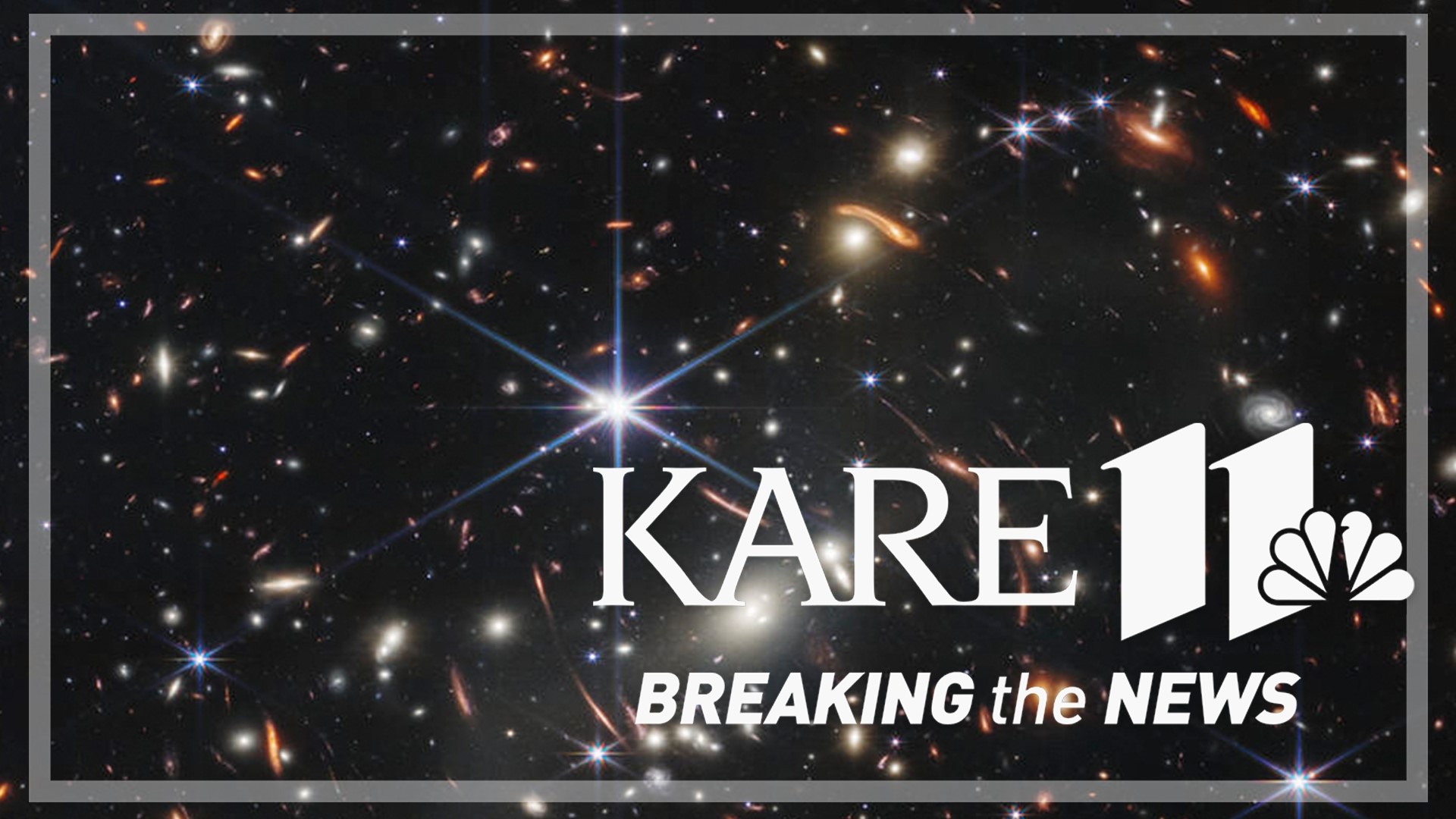ST PAUL, Minn. — New pictures from a new NASA telescope are some of the clearest ever of our universe, and yet, they represent just a tiny piece of it.
Weighing the size of an adult African elephant with a sunshield the length of a tennis court, the James Webb Telescope launched into space on Christmas last year and has been capturing infrared images over the last couple of weeks.
On Monday, for the first time, NASA officials and President Joe Biden revealed one of its images.
"We can see possibilities no one has ever seen before," Biden said. "We can go places no one has ever gone before."
Tuesday morning, NASA dropped four more images: Southern Ring Nebula, Exoplanet WASP-96 b, Cosmic Cliffs in Carina, and Stephan's Quintet. By the afternoon, planetarium educator Thaddeus LaCoursiere had them uploaded onto the large dome screen at the Whitney and Elizabeth MacMillan Planetarium within the Bell Museum where he works.
"I was sitting there waiting; just watching the NASA feed waiting for it to start," LaCoursiere said. "The first image that NASA chose to release is the deepest view ever into the universe."
He says when taking in the images, it helps to consider that distance is also time.
"When we see light, that light is reaching our eyes or our telescopes and it takes time to get there," LaCoursiere said. "And we're looking at galaxies here that are say four billion lightyears away. So, the light that has reached us has taken four billion years to get to us."
While some of the galaxies could be four billion lightyears away, he says others could be 13.6 billion lightyears away.
"You could count thousands of galaxies here," he said. "This total area of sky is about, well, you could cover it up with a grain of rice held out at arm's length."
He says the images show how much even a tiny area of sky contains and how much more there is to explore.
"It's showing us some of what's in the atmosphere of a planet around another star," LaCoursiere said. "So in particular, this is showing us that there is water, H2O, just like we have here on Earth — water in the atmosphere of a planet known as WASP 96B. It's a little bit larger than the planet Saturn. James Webb will further tell us what the chances are that we should be finding life out there."
LaCoursiere says NASA is expected to release more images on a monthly basis.
Watch more Breaking The News:
Watch all of the latest stories from Breaking The News in our YouTube playlist:

